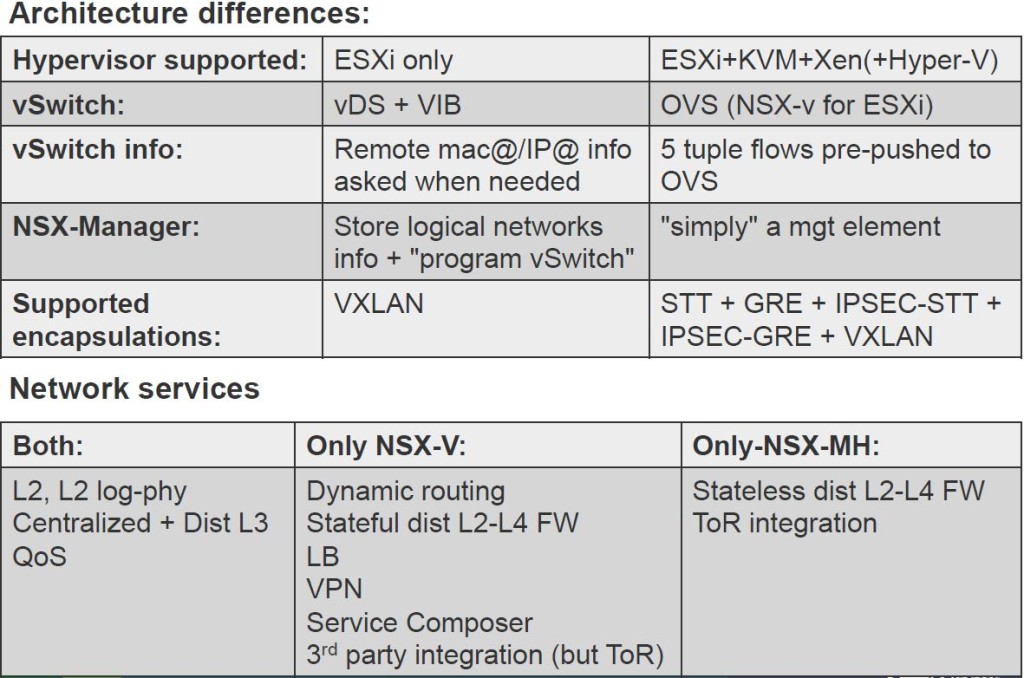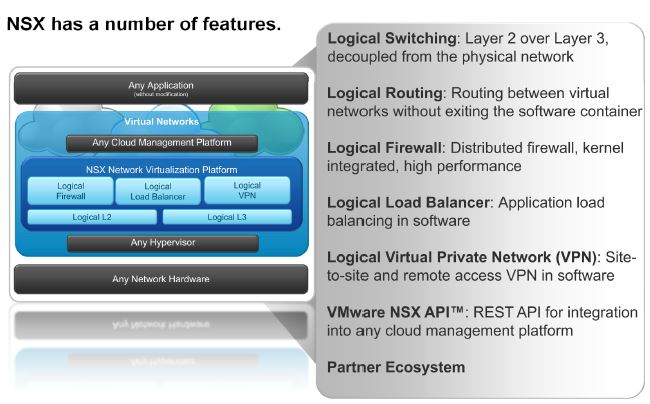As an NSX vExpert, I was privy to an early access preview of some of the NSX updates that are due to be announced during VMworld 2017 Vegas – This is a summary of all those announcements and, while I prepped the post before VMworld announcements were made to general public, by the time this post is published and you read this, it will be all public knowledge.
Growing NSX market
- NSX customer momentum is very good, with around 2600+ new NSX customers in Q2 which is twice that year ago.
- Typical customer sectors are from all around, Service providers, healthcare, Finance, Technology, Public sector…etc
- Typical use cases belong to Security (Micro-Segmentation, EUC & DMZ anywhere), Automation and App continuity (DR, Cross cloud)
Since I work for a VMware partner (reseller), I can relate to these points first hand as I see the same kind of customers and use cases being explored by our own customers so these appear to be valid, credible market observations.
Network & Security New Announcements (VMworld 2017)
Given below are some of the key NSX related announcements that will be / have been annouced today at VMworld 2017 Vegas.
- NSX-T 2.0 release
- On-premise network virtualisation for non-vSphere workloads
- Cloud Native App framework (K8 integration)
- Cloud integration (Native AWS platform)
- VMware Cloud Services
- Number of new SaaS solution offerings available from VMware
- The list of initial solutions available as SaaS offering at launch include
- Discovery
- Cost insights
- Wavefront
- Network insight
- NSX Cloud & VMware Cloud on AWS
- Well, this is not news, but been pre-announced already
- VMware AppDefense
- A brand new data center endpoint security product
- Workspace One (Cloud)
- vRealize Network Insight 3.5
- vRNI finally expanding to cloud and additional on-premise 3rd party integrations
NSX-T 2.0 release (For secure networking in the cloud)
So this is VMware’s next big bet. Simply because it is NSX-T that will enable the future of VMware’s cross cloud capabilities by being compatible with all other none vSphere platforms including public cloud platforms to extend the NSX networking constructs in to those environments. Given below are the highlights of NSX-T 2.0 announced today.
- On-premise automation and networking & Security (Support for KVM)
- Multi-Domain networking
- Automation with OpenStack
- Micro-Segmentation
- Cloud Native Application Frameworks
- VMs and containers
- CNI plugin integration for Kubernetes
- Micro-Segmentation for containers / Microservices via NST-T 2.0 (roadmap)
- Monitoring & analytics for containers / Microservices via NST-T 2.0 (roadmap)
- Public Cloud Integration
- On-prem, Remote, Public & Hybrid DCs
- Native AWS with VMware secure networking – Extends out NSX security constructs to legacy AWS network
NSX-T integration with Container as a Service (Kubernetes for example) and Platform as a Service (AWS native networking) components a NSX container plugin and the architecture is shown below.
VMware Cloud Services (VCS)
This is a much anticipated annoucement where NSX secure networking capabilities will be offerred as a hosted service (PaaS) from VMware – Known as “VMware Cloud Services portal”. This will integrated with various platforms such as your on-premise private cloud environment or even public cloud platforms such as native AWS (available now) or Azure (roadmap) by automatically deploying the NSX-T components required on each cloud platform (NSX manager, NSX controllers & Cloud Services Manager appliance…etc). This is TOTALLY COOL and unlike any other solution available from anyone else.
As a whole, VCS will provide the following capabilities on day 1, as a SaaS / PaaS offering.
Key capabilities this PaaS provide include the below, across the full Hybrid-Cloud stack.
- Discovery
- Networking Insights
- Cost management / insight
- Secure Networking (via NSX Cloud)
The beauty of this offering is this will provide all the NSX natice capabilities such as distributed routing, Micro segmentation, Distributed switching, data encryption and deep visibility in to networking traffic will all be extended out to any part of the hybrid cloud platform. Ths enables you to manage and monitor as well as define & enforce new controls through a single set of security policies, defined on a single pane of glass, via Cloud Services portal. For example, the ditributed firewall policies that block App servers from talking direct to DB servers, once defined, will apply to the VMs whether they are on premise on vSphere or moved to KVM or even when they reside on AWS (VMware cloud or native AWS platform). All of this becomes possible through the integration of NSX-T with cloud platforms that enables additional services using network overlay. In the case of public cloud, this will provide all these additional capabilities that are not natively available on the cloud platform which is awesome.!
I cannot wait for VCS to have Azure integration also which I believe is in the roadmap.
I will be doing a detailed post on VCS soon.
VMware Cloud on AWS
Well, this is NOT news anymore as this was annouced last year during VMworld 2016 and since then technical previews and public beta of the platform has already been available. So I’m not going to cover this in detail as there are plenty of overview posts out there.
However the main announcement today on this front is it is NOW (FINALLY) GENERALLY AVAILABLE for customers to subscribe to. Yey!! The minimum subscription is based on 4 nodes (vSAN requirements).
VMware App Defence
A brand new offering that is being annouced today that will extend the security layer to the applications. This is pretty cool too and I’m not going to cover the details here. instead, I will be producing a dedicated post to cover this one later on this week.
Summary
All of these annoucements are the implementation milestones of the VMware Cross Cloud Architecture (CCA) initiative that VMware annouced during last year’s VMworld where VMware will enable the workload mobility between on-premise and all other various public cloud platforms, primarily through the use of NSX to extend the network fabric acorss all platforms. Customers can build these components out themselves or they can simply consume them via a hosted PaaS. I am very excited for all my customers as these capabilities will help you harness the best of each cloud platform and new technology innovations such as containers without loosing the end to end visibility, management capabilities and security of your multi-cloud infrastructure platform.
Cheers
Chan

















